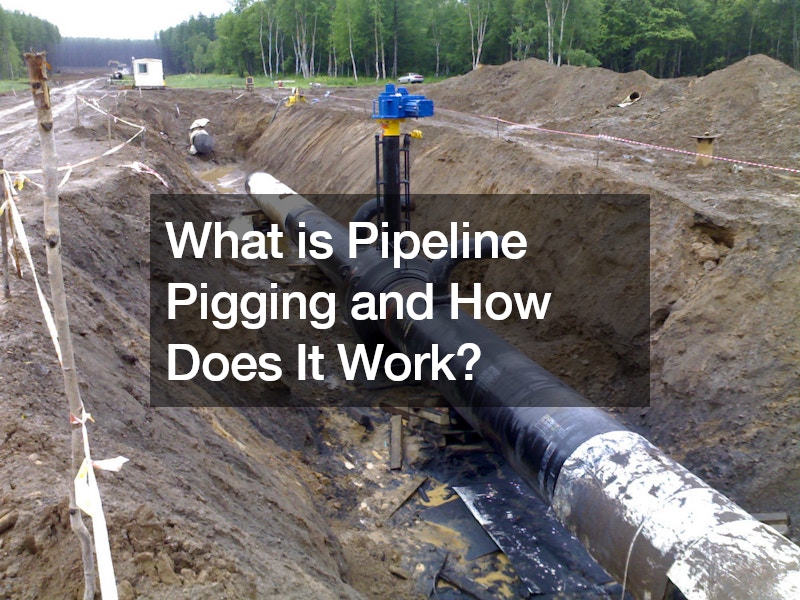
Pipeline pigging is a crucial process in the maintenance and operation of oil and gas pipelines, ensuring their safety, reliability, and efficiency. Through the use of specialized devices called “pigs”, pipelines undergo both inspection and cleaning from within, providing valuable insights into their condition and facilitating necessary maintenance activities. In this article, we’ll delve into the intricacies of pipeline pigging, exploring its significance, functionality, and the technology behind it.
Understanding Pipeline Pigging
Pipelines are lifelines of the oil and gas industry, transporting valuable resources across vast distances. Over time, these pipelines can accumulate debris, sediment, and other contaminants that may compromise their integrity and efficiency.
Pipeline pigging addresses these concerns by employing pigs, devices that are either electronic or mechanical, to travel through the pipeline’s interior.
The Role of Pigs in Pipeline Maintenance
There are two primary types of pigs used in pipeline maintenance: inspection pigs and cleaning pigs. Inspection pigs, often referred to as “smart pigs”, are equipped with sophisticated sensors and data collection capabilities. As they traverse the pipeline, they gather detailed information about its condition, detecting anomalies such as corrosion, cracks, or leaks. This data is invaluable for pipeline operators, allowing them to identify potential issues early and take corrective action before they escalate.
The Pipeline Pigging Process
The pipeline pigging process typically begins with the insertion of the pig into the pipeline through an aboveground launching station known as a “pig launcher”. From there, the pig travels through the pipeline, propelled by the flow of product or by an external driving force. As it progresses, an inspection pig collects data using its onboard sensors, providing real-time feedback to operators.
Pipeline Cleaning with Pigs
In addition to inspection, pigs are also used for pipeline cleaning. Cleaning pigs, as their name suggests, are designed to scrub the interior walls of the pipeline, removing debris, scale, and other contaminants. This helps maintain optimal flow conditions and prevents blockages that could impede the flow of product.
Safety Measures and Environmental Considerations
Safety is paramount in the pipeline pigging process. Before inserting a pig into the pipeline inspection, operators must first vent any trapped gases to prevent pressure build-up. This controlled venting is carefully monitored and reported to regulatory authorities to ensure compliance with safety standards. Additionally, any liquids collected by the pig during its journey are disposed of in accordance with environmental regulations.
Environmental Benefits of Pipeline Pigging
Pipeline pigging offers several environmental benefits that contribute to sustainability and reduce the environmental impact of oil and gas transportation.
One of the primary environmental benefits of pipeline pigging is the prevention of spills and leaks. Regular pigging helps remove accumulated debris, corrosion, and other contaminants from the pipeline, reducing the risk of blockages and breaches that could lead to hazardous spills. By maintaining clean and clear pipelines, pigging helps safeguard sensitive ecosystems, water sources, and wildlife habitats from the adverse effects of oil and gas releases.
Furthermore, pipeline pigging can help minimize product loss and waste. By removing residual product and contaminants from the pipeline during pigging operations, operators can recover valuable hydrocarbons that would otherwise be lost or wasted. This not only maximizes the efficiency of the transportation system but also reduces the need for additional extraction and production, thereby conserving natural resources and minimizing environmental footprint.
In addition to preventing spills and reducing product loss, pipeline pigging can improve operational efficiency and energy conservation. Clean pipelines require less energy to transport oil and gas products, as friction and resistance are minimized. This results in lower energy consumption and reduced greenhouse gas emissions associated with pipeline operations. By optimizing the flow of products through the pipeline network, pigging helps minimize the carbon footprint of oil and gas transportation and contributes to overall energy efficiency.
Overall, pipeline pigging plays a vital role in promoting environmental sustainability within the oil and gas industry. By implementing regular pigging programs and adhering to best practices, operators can minimize environmental risks, conserve resources, and reduce the ecological footprint of pipeline operations.
Pipeline Pigging Best Practices
Pipeline pigging is a critical aspect of maintaining the integrity and efficiency of oil and gas pipelines. To ensure optimal performance and safety, industry best practices have been developed to guide pipeline operators in their pigging operations.
One of the key best practices in pipeline pigging is establishing a regular pigging schedule. Routine pigging helps prevent the buildup of debris, sediment, and other contaminants within the pipeline, reducing the risk of corrosion and blockages. The frequency of pigging depends on factors such as pipeline size, product type, operating conditions, and regulatory requirements. By adhering to a consistent pigging schedule, operators can prolong the lifespan of their pipelines and minimize the need for costly repairs.
Conclusion
Pipeline pigging plays a critical role in ensuring the safety, reliability, and efficiency of oil and gas pipelines. By employing specialized pigs for inspection and cleaning purposes, pipeline operators can proactively monitor the condition of their assets and address any issues before they escalate. With a focus on safety, environmental stewardship, and regulatory compliance, pipeline pigging remains an indispensable practice in the oil and gas industry.
.

